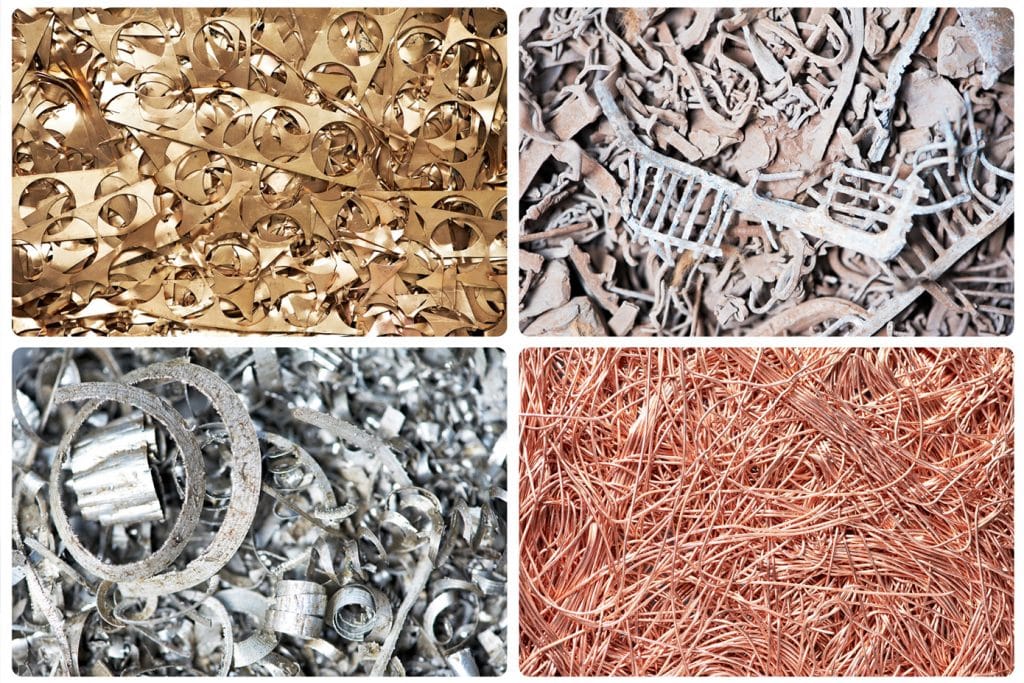Alternatively the most popular non-ferrous metals are aluminum copper tin gold and silver. Low density less mass Colourful.
 Difference Between Ferrous Non Ferrous Metals Selmach
Difference Between Ferrous Non Ferrous Metals Selmach
Other common properties of non-ferrous metals are non-magnetic malleable and lightweight.

Ferrous non ferrous metals. Easy to fabricate machinability casting welding etc. Non-ferrous metals include aluminum brass copper nickel tin lead and zinc as well as precious metals like gold and silver. Non-Ferrous Metals What is non-ferrous metal.
While the iron content in ferrous materials can be a tremendous benefit for some there are some downfallsmost notably oxidation. Light in weight and malleable but strong a good conductor of heat and corrosion resistant. The two metals which comes under Non-Ferrous metals are.
Again we are going to provide some information on each metal and its properties. Ferrous metals contain iron while non-ferrous metals do not. The higher demand for non-ferrous metals means they are generally more expensive than ferrous metals.
Since non-ferrous metals dont contain iron theyre usually more corrosion-resistant than ferrous metals. For instance non-ferrous metals are much more malleable than ferrous metals. All these alloys share the same two basic non-ferrous qualities with their base metallic components indifference towards magnets and.
Important non-ferrous metals include aluminium copper lead nickel tin titanium and zinc and alloys such as brass. Alloy metals such as Duralumin which is composed of a combination of copper and manganese in a 41 ratio besides aluminum brass which is 35 zinc and 65 copper and Gliding metal an alloy of 15 zinc and 85 copper are some of the most prominent non-ferrous metal examples that are made by combining two or more other non-ferrous base metals. Ferrous Metals like steel and iron is used commonly in buildings and engineering industries.
Aluminium and resistance to corrosion eg. Examples of non-ferrous metals. Drink cans saucepans bike frames.
The two types of metals also have distinctive characteristics that go beyond iron. Non-ferrous metals include aluminum copper lead zinc and tin as well as precious metals like gold and silver. Non-ferrous metals have a long history in human civilization.
Although ferrous metals like stainless steel tend to be less expensive than non-ferrous metals there are often times when the additional cost of a non-ferrous metal like aluminum is more than justified for certain projects especially when corrosion-resistance is a top priority. The principal non-ferrous metals used in engineering applications are Copper Aluminum Zinc Tin Lead Cobalt Nickel Chromium Magnesium and their alloys. That is what makes certain metals suitable for specific applications over others.
Below is a closer look at those defining characteristics and examples of each type of metal. Characteristics of Non-Ferrous Metals. Precious metals such as gold silver and platinum and exotic or rare metals such as cobalt mercury tungsten beryllium bismuth cerium cadmium niobium indium gallium germanium lithium selenium tantalum tellurium vanadium and zirconium are also non-ferrous.
Copper for instance was discovered in 5000 BC at the end of the Stone Age. This means that the recycling process must be tailored for these metals. Ferrous metals are those made of or from iron while non-ferrous metals are those that do not contain iron.
To put it simply iron or ferrous materials are susceptible to corrosion and rust. The word ferrous is derived from the Latin ferrum meaning iron and like copper and bronze the word not only denotes a metal widely used today on an. While non-ferrous metals can provide strength they are primarily used where their differences from ferrous metals can provide an advantage.
Ferrous metals are valued for their strength and durability while non-ferrous metals are chosen for their malleability corrosion and rust resistance and non-magnetic properties. For example non-ferrous metals are much more malleable than ferrous metals. The textbook difference between ferrous vs non-ferrous metals is the presence of iron.
Non-ferrous metals can also be distinguished by their malleability. Some examples of non-ferrous metals are aluminum aluminum alloys and copper which are often used in industrial applications such as gutters roofing pipes and electrical. Generally these are more costly than the ferrous metals.
Non-ferrous metals advantages make them usable in many applications instead or iron and steel. They also have no iron content giving them a higher resistance to rust and corrosion and making them ideal for gutters liquid pipes roofing and outdoor signs. The properties of non-ferrous metals.
Non-ferrous metal Properties Uses. Many of these metals have been used for thousands of years and across countless industries like construction structural engineering jewelry electrical munitions and coin minting. We have a number of techniques and machinery to sort and produce the recycled material which is prepared ready for furness and smelter feeds.
Non-ferrous metals tend to have a higher melting point than ferrous metals and they have a greater resistance to corrosion. Non-ferrous metals are those which do not contain significant quantity of iron ferrite or iron as the base metal. Non-ferrous metals also include brass gold nickel silver tin lead and zinc.
Copper low weight eg. Non-ferrous metals are used because of its properties such as higher conductivity eg. Non-ferrous metals dont contain a significant amount of iron and are more desirable as they have conductive non-magnetic and low weight properties.
Lets dive into the concept of Non-Ferrous Metals. While non-ferrous metals can provide strength they are primarily used when their differences from ferrous metals can provide an advantage. Their main advantage over ferrous materials is their malleability.
Examples of non-ferrous metals include aluminum alloys copper gold nickel brass silver lead and zinc. Non-ferrous metals include aluminum brass copper nickel tin lead and zinc as well as precious metals such as gold and silver.